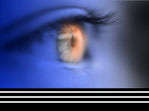When recording at home or at my workplace, I usually hook up my rack system directly to the mixing
board. Miking a cabinet would be the best but that would also be way too loud, which most people around wouldn't appreciate
much...
So I use the cabinet simulator in my Rocktron Xpression instead, which is fortunately pretty decent
quality and does the job fairly well.
On the computer I use Adobe Audition 1.0 and more recently 1.5 recording software. It is an excellent
tool to help lay down my ideas. Since I'm not very good at writing lyrics and vocal melodies, I usually just concentrate
on guitar themes, harmonies, and riffs, basically only the instrumental aspect of a song. I leave the task of writing lyrics
and vocal melody to my friends who are a lot more knowledgeable at that.
For a new song, first I assemble a skeleton drum track that follows my idea of the whole song.
This drum track will be tweaked later on. Then I record my guitar riffs. I usually double track the rhythm guitars
sometimes even record the same riff on 4 different tracks to make the guitar sound thicker.
After laying down the rhythm guitars, I record what I presonally call "nuance tracks". These are
guitar tracks but they are usually barely audible in the final mix, they sort of serve a purpose of creating variations
of a given chord not just a basic simple power chord. They are not strong or loud enough to carry a melody themselves, they
just accent the chord structure. And here I have to put a disclaimer: I have no (or just minimal) formal music theory training,
thus what I say here might often sound weird, funny, or even B.S....:) Please forgive me for that, I wish I knew
more music theory and I could name all the harmonies I am using in a song.
After completing most of the guitar tracks, I record the bass track. This is no rocket science and
goes fairly quick. I play bass in one of my bands so playing bass is not a major pain in the neck when recording.
After that I think about some kind of guitar solo if the song needs one. This sometimes is a fairly
time consuming procedure.
After finishing all the recordings I mix down the tracks. I try to find every track's place in the
strereo field. I ususally pan the rhythm guitars left and right. I used to hard pan them 100% left and right but nowadays
I choose to pan them about 70% right and 70% left for some reason. It is very important to find every instruments place in
the stereo field so they don't interefere with each other and so they can be separated from each other.
I also play with the EQ for each track. Most often individual tracks need to be EQ-d so they
won't interfere with each other. Every track has to have its place in the frequency spectrum. It is a lot easier to set the
right volume level of the tracks if we find their place in the stereo field and the frequency range. Again, all this
might not sound technically correct, especially considering the terms I'm using, but this is the way I see it, and I'm just
trying to explain it in my own words sort of.
When the final mix is done, I mix down the song in a WAV format and it's done:)

